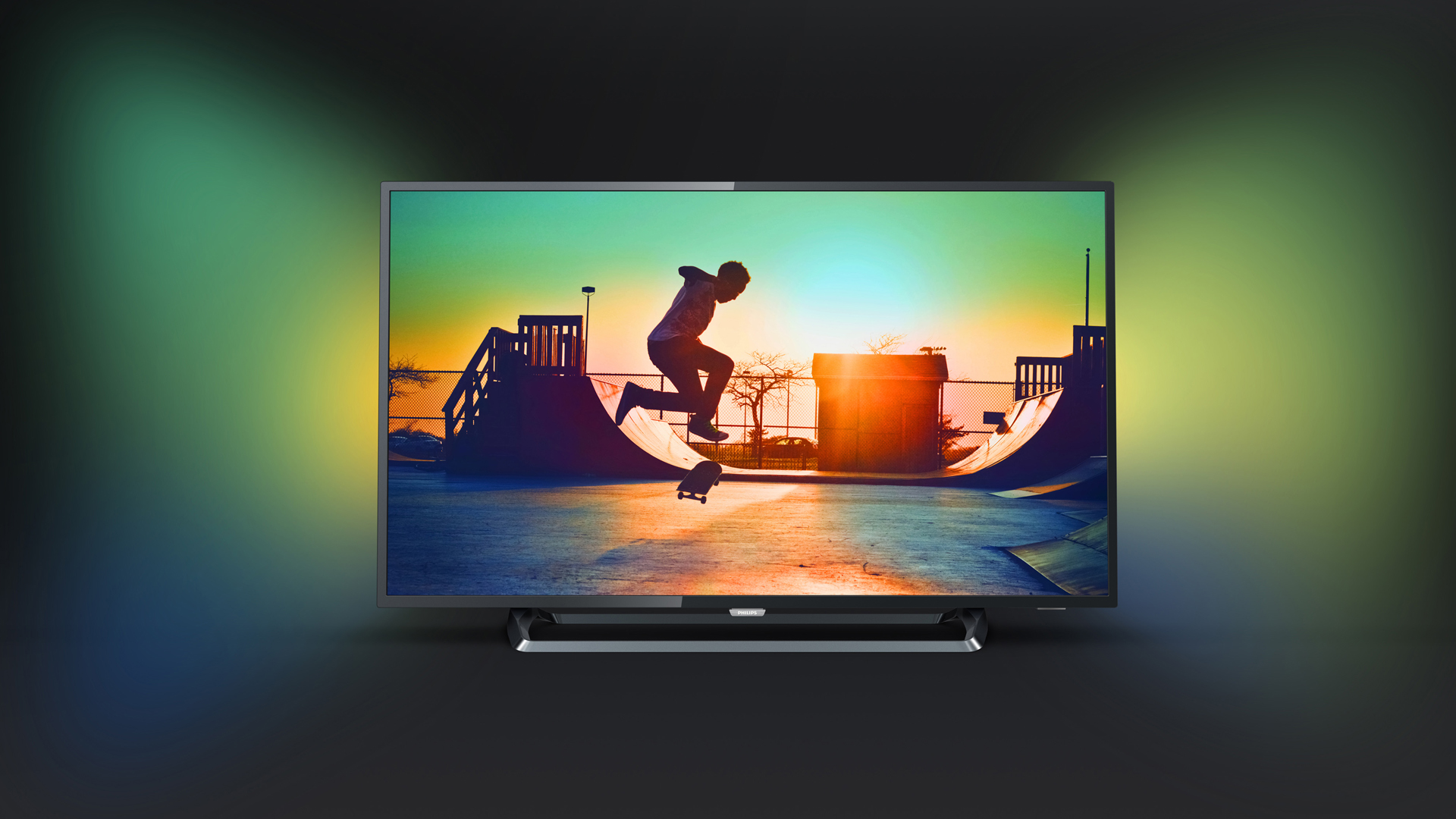TechRadar Verdict
When it comes to bang for buck, this Philips is right on target. We love the provision of Ambilight, while 4K images are sharper than a box of tacks. But take claims of HDR support with a pinch of salt. This UHD cheapie doesn’t have what it takes to really dazzle.
Pros
- +
4K resolution with HDR
- +
Two-sided Ambilight
- +
Great Catch-up TV
- +
Bargain price tag
Cons
- -
Low brightness HDR
- -
Predictably puny audio
- -
Small screen size
- -
Cheap build
Why you can trust TechRadar
The budget 4K TV aisles are getting crowded. As buyers gravitate to smaller screens, prices are plunging, even as feature specifications get more generous.
Philips is a prime agitator. Its latest pocket-change 6 series screen doesn’t skimp on features. In addition to UHD resolution and HDR support, it offers Ambilight, the LED mood lighting system which can now integrate with a larger Hue lighting scheme. And if that doesn’t whet your eyeballs, then nothing will.
The 43-inch 43PUS6262 reviewed here is the smallest in Philips 6000 series line-up. It’s joined by the step-up 50-inch 50PUS6262, 55-inch 55PUS6262 and expansive 65-inch 65PUS6262. You’ll be hard pressed to find cheaper screens as well equipped. So what’s the catch?
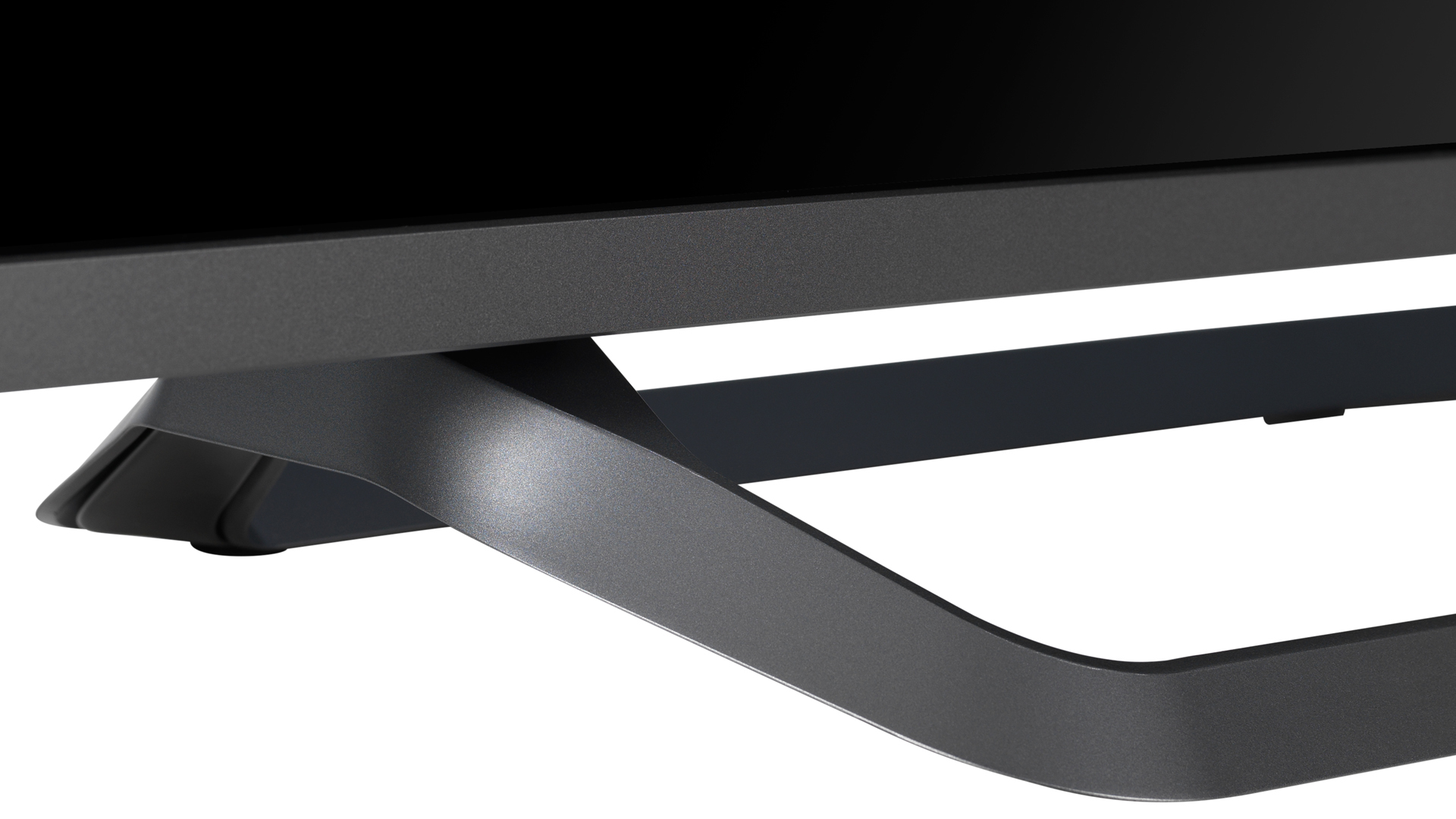
Design
Screen sizes available: 43-inch, 50-inch, 55-inch, 65-inch
Tuner: Freeview Play, generic satellite HD
4K: Yes
HDR: Yes
Panel technology: LED LCD
Smart TV: Yes, Philips Smart
Curved: No
Dimensions: 971.3 x 575.2 x 77.3 mm
3D: No
Inputs: 3 x HDMI, 2 x USB, component AV
Cosmetically, this 6 Series TV looks substantial enough. Closer inspection though reveals that bezel and stand are lightweight grey plastic. Connectivity is good. All three HDMI inputs are 4K HDCP 2.2 compatible, a requirement for 4K UHD sources. There’s also a component AV input, two USB ports, plus an optical digital audio output. Ethernet and Wi-Fi are standard.
The TV offers a choice of satellite and terrestrial tuners, the latter Freeview Play. For those who haven’t been paying attention, this is the latest iteration of the ubiquitous non-contract TV platform, able to seamlessly mix over-the-air channels with internet delivered catch-up.
A quad core processor keeps navigation snappy. The menus are standard Philips fare, and as such are reasonably intuitive. A convenient Home button pulls up a vertical list for channels, Freeview Play guide, sources and settings.
Design TL;DR: The thin bezel and lightweight stand look smart enough, but build quality is plasticky
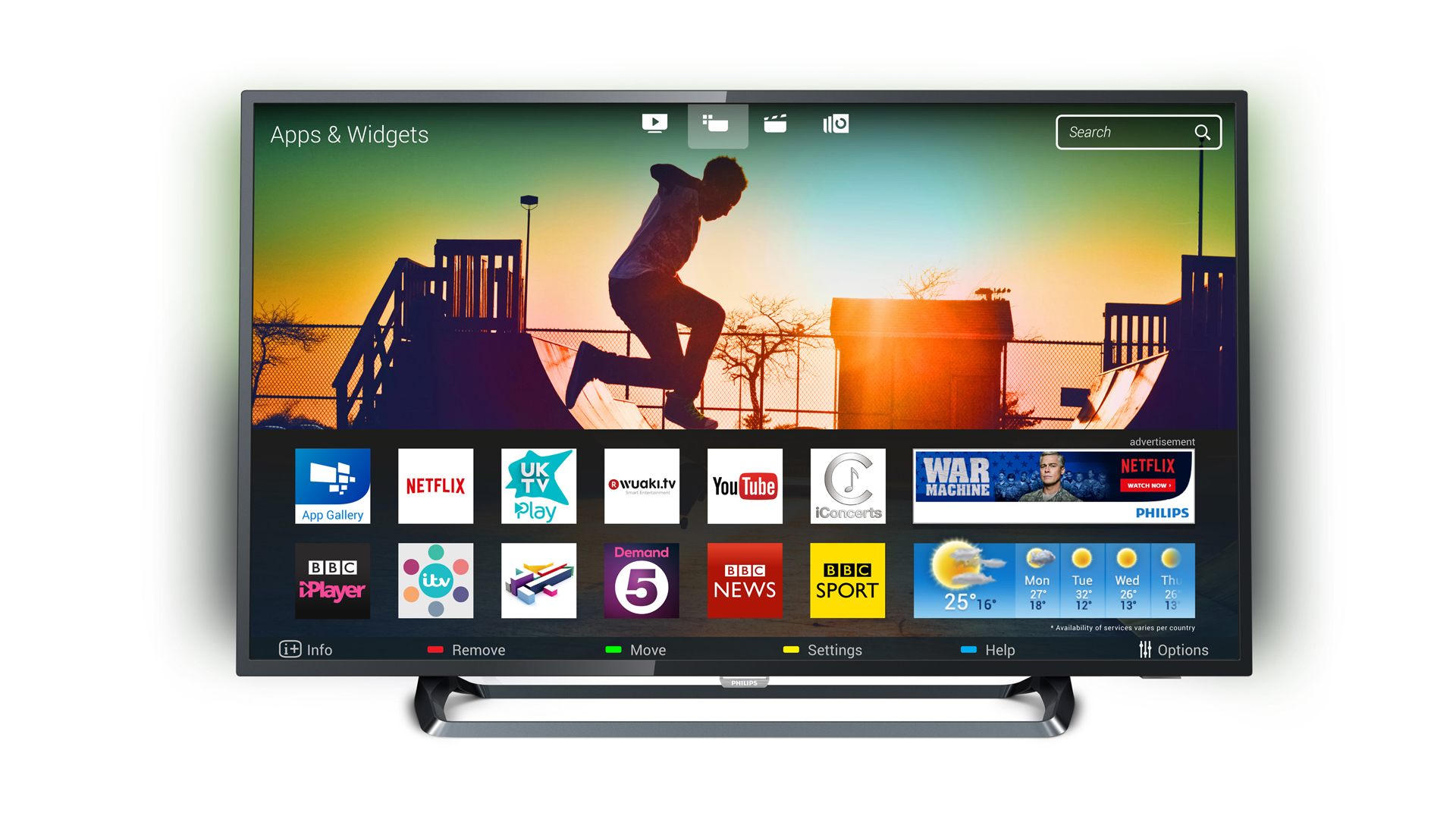
Smart TV - Philips
Philips doesn’t offer Android on this screen (it’s available further up the range), but its basic connected proposition is solid nonetheless. Freeview Play puts all the UK's main Catch Up TV services (BBC iPlayer, ITV Hub, All 4, Demand 5) within easy reach, via a 7-day TV guide, as well as UKTV Play and BBC News and Sport apps.
A generic smart hub then offers Netflix, YouTube, Amazon Video and Vimeo, amongst others. Netflix streams in 4K HDR, while Amazon is 4K. There’s also support for YouTube 4K streams.
Smart TV TL;DR: Not the most advanced Smart TV platform you’ll find, but it does the job
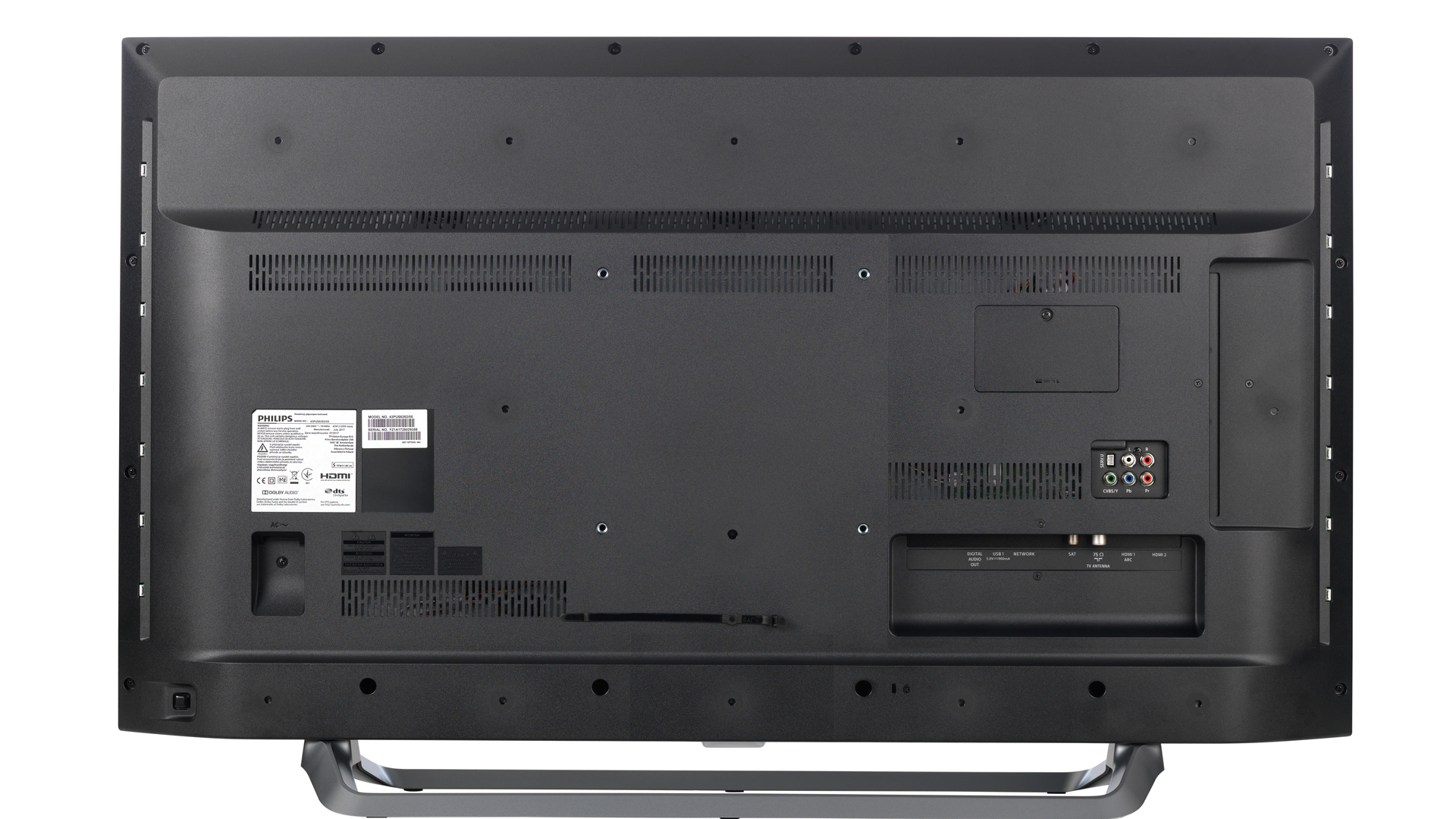
HD/SDR Performance
Full HD imagery looks crisp and thanks to the pixel density of the 4K panel has a photographic sheen which delights. This set looks sharp with Freeview HD and looks excellent with regular Blu-ray.
In keeping with its sub-£500 price point, panel brightness is limited. Which presents us with an early caveat. A consequence of running HDR10 content into such a screen is that the set actually pulls down the average picture level, presumably as it attempts to tone map. This can make some HDR content look surprisingly dark. Consequently, this set actually looks consistently better with SDR content.
HD/SDR Performance TL;DR: Full HD and SDR look great here, with UHD pixel density adding a photographic smoothness to 1080p sources
4K/HDR Performance
All things considered, UHD image clarity is extremely good. The set zings with 4K from Sky Q. However, as we’ve hinted, its HDR performance is more of a talking point. We measured peak HDR luminance, with a 5 per cent window, at just over 350 cd/m2 (aka nits), which is no different from an SDR LED LCD screen at a comparable price. With Star Trek Discovery (Netflix), the HDR lens flare and otherworldly highlights don’t get beamed onboard. If you want bright spectral highlights, you won’t find them here.
There are also predictable issues with black level. It’s not profound, and you’ll find a lot of near black shadow detail has been crushed from sight. But these issues shouldn’t surprise when you’re buying on a tight budget.
Colours are lush. When Okja (Netflix, 4K HDR) frolics in a pool, it’s invitingly blue, the surround forest is a rampant green.
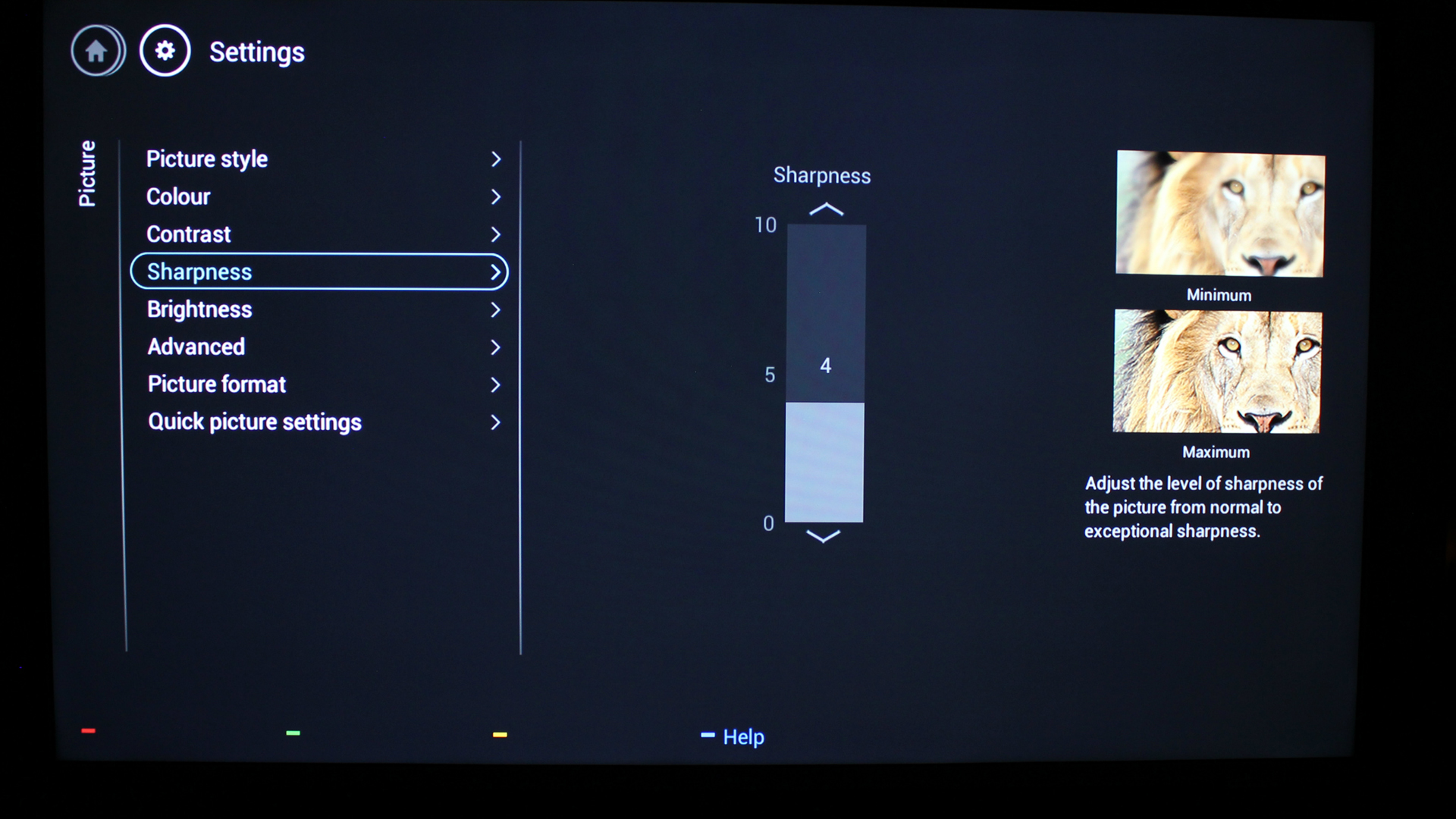
There’s no shortage of viewing options. Modes include Personal, Vivid, Natural, Standard, Movie and Game; these become HDR Personal, HDR Vivid, HDR Natural, HDR Movie and HDR Game when triggered. There are deeper adjustments to be had, including contrast, sharpness, brightness and motion.
Motion handling is a bit arbitrary. Somewhat surprisingly, we encountered more overt artefacts using Standard and Smooth image processing from the Motion Style menu, than the Sports option. When watching films, the 'Off' or 'Movies' settings are the most cinematic. Select the Personal Motion Style and you unlock the Natural Motion sub menu, but with Natural Motion on Medium you’ll still see minor artefacts.
The screen itself is a tad reflective, so take care with placement. This can work against contrast and clarity in a brightly light room.
4K/HDR Performance TL;DR: Sit close to appreciate the extra clarity offered by UHD, but don’t expect miracles when it comes to HDR delivery
Sound
The TV’s audio performance is adequate. There’s a variety of sound modes (Personal, Original, Movie, Music, Game and News), but you’ll not get too much variation with these. Ultimately, your ears will benefit most from the addition of an external sound system, be it soundbar, two channel stereo system or soundbase.
Sound Quality TL;DR: As befits a bargain TV, the screen makes a functional noise. But it’s worth budgeting for a step-up TV audio solution
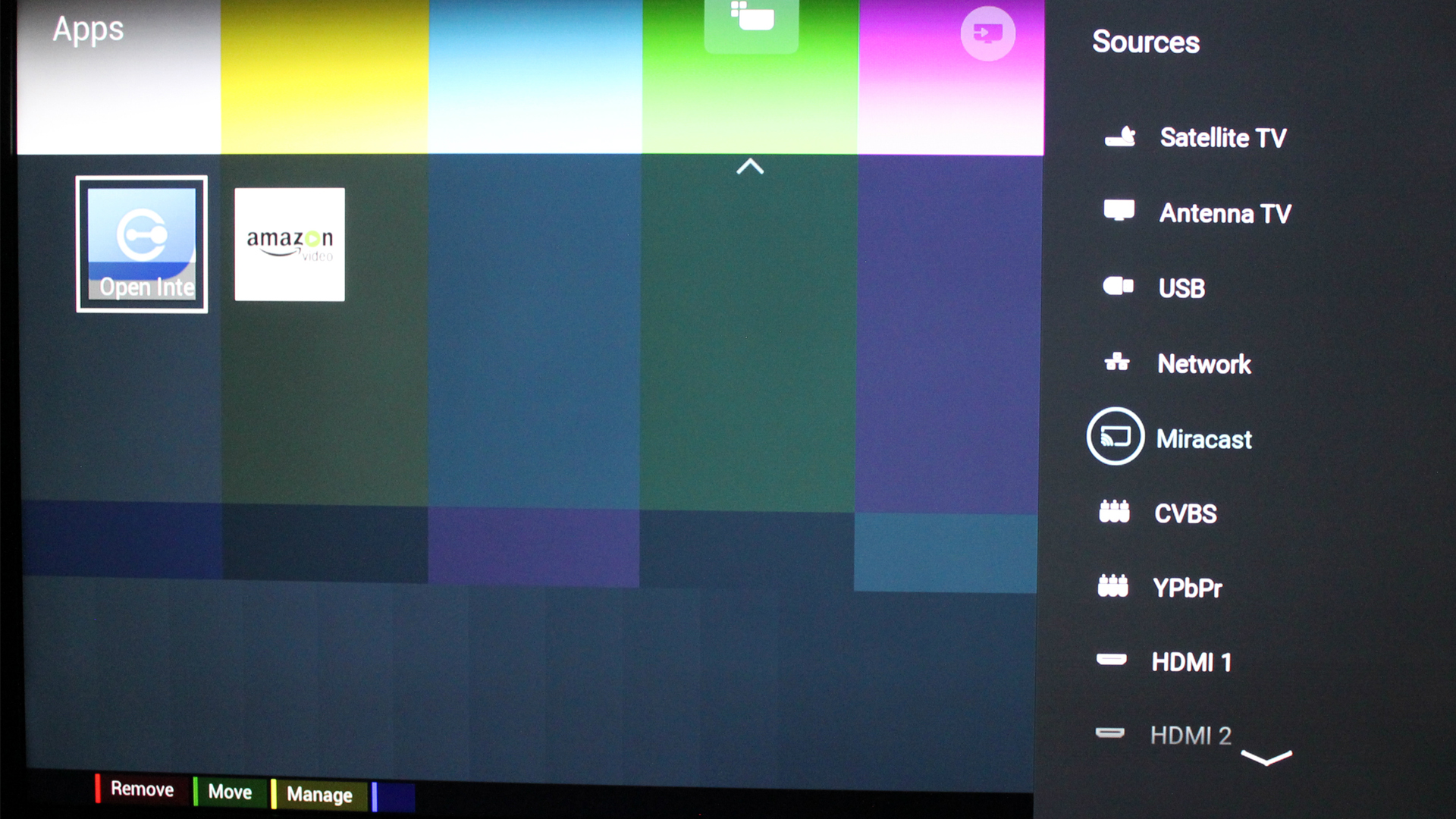
Other panels to ponder
The forty-something 4K screen market is hotting up, so you’ll find a number of sets competing alongside this Philips.
Hisense touts the 43-inch N5500 range at a similar price point. They’re also HDR compatible and boast an integrated dbx-tv sound system for better audio. They’re in line for a Freeview Play firmware update too.
Elsewhere, British TV manufacture Cello has its new 4K Platinum models. These feature excellent audio out of the box, courtesy of an integrated soundbar, but you’ll need to opt for a 50-inch model to get 4K resolution. They lack HDR though.
Finally, Samsung's 40-inch MU6400 suffers from similar peak brightness issues to the Philips, but its VA LCD panel offers some sumptuous colors, and its operating system is fast and responsive.
Verdict
When it comes to value for money, the 43PUS6262 deserves all the gongs. Its connected services are right on point, and the beauty of two-sided Ambilight will be a deal clincher for many. The provision of HDR may ultimately be a curate's egg (given the TV looks its best with SDR content), but at least you’ll not feel like a second class UHD citizen when browsing Netflix, and fine detail performance is black-tie sharp. Watching this screen, it’s easy to forget just how cheap the price tag actually is.
- Check out our guide to the best 4K TVs for our top recommendations.
Steve has been writing about AV and home cinema since the dawn of time, or more accurately, since the glory days of VHS and Betamax. He has strong opinions on the latest TV technology, Hi-Fi and Blu-ray/media players, and likes nothing better than to crank up his ludicrously powerful home theatre system to binge-watch TV shows.
